The day is finally here: you get to bring your new puppy home.
You may have picked him or her out weeks ago and have been impatiently watching your pup grow, or you may have just learned about him yesterday and are trying to get your ducks in a row so you’re ready.
Once you get your new Dachshund home, the last thing you want to do is have to turn around and leave your puppy because you forgot to get something you need for the first day or week.
You also don’t want to sit at home trying to figure out what you are supposed to do with a new puppy while she’s running around chewing on shoes and getting into mischief.
During the first week you are both learning and adjusting, getting used to a new normal.
It’s important to have a plan before you bring your new puppy home.
Being prepared and having a plan will smooth out the transition and make the first week a fun-filled adventure.
Use these 9 tips for the first week with your dachshund puppy to make sure you’re ready.
Your New Dachshund Puppy: First Week Survival Guide
Sometimes the first week with your puppy can feel like that – survival.
It doesn’t mean your first week has to be hard – it won’t be if you use the preparation tips below – but it will go by lightening fast and your head will be spinning a little with all the excitement.
1) Gather All the Stuff You Will Need
This tip is, technically, something you will do before you bring the puppy home.
You may still be doing some of this stuff during the first week though.
What to buy for your Dachshund puppy
Note: some of the links below are affiliate links, which means that we receive a small commission if you make a purchase.
Dachshund puppies need a lot of stuff, and it’s easy to forget things when you’re shopping.
Whether you already have some stuff on hand, or are staring with an empty shopping cart, use the list below so you don’t have to make unexpected trips to the store after bringing your Dachshund home.
- Pet stain remover/cleaner like Biokleen Bac-Out or Nature’s Miracle Advanced
- Towels/paper towels
- A puppy bed
- Collar or very small, inexpensive dog harness (because your puppy will probably grow out of it quickly)
- Leash
- Food & water bowls
- Biodegradable poop bags
- Small dog toys like ZippyPaws Mini Hedgehogs or Squeakie Cookies
- Portable pet pen – like the Carlson Foldable Pet Playpen – and/or dog crate
- Puppy proofing supplies including bitter spray to deter chewing
- Things to distract them and keep them busy (like bully sticks, a beginner food puzzle, or a snuffle mat)
- Pumpkin puree (this one also has soothing ginger) for upset/nervous tummies
- Puppy food (see tip #2 about what food(s) you should buy)
Find out from the breeder or rescue whether you need to keep feeding your puppy the same food for a while or whether you can start transitioning to something new right away.
2) Keep feeding your puppy their regular food or start transitioning them to a new one
If getting your puppy from a breeder, talk to the breeder about what food you should feed your puppy.
You may want to, or be required by the breeder, to keep your puppy on that food for a while.
At least have some of it on hand so your puppy can be safely transitioned to a new food.
Find out if the breeder is sending you home with a bag of that food or if you will need to go out and buy some.
If adopting or rescuing, the puppy has likely been on several foods during its life.
In this case you can probably start feeding the puppy your chosen food right away.
A probiotic may be able to help their tummy adjust to a new food if the new food gives them diarrhea.
3) Use this time to get your puppy adjusted
Your new puppy will be anxious leaving littermates, Mom, and moving to a new house with new people.
A soft blanket, snuggle hound, crate, calming chews, and lots of love and attention/reassurance can help the puppy adjust.
Your new puppy may be anxious leaving littermates, Mom, and moving to a new house with new people. Be sure to plan for your puppy’s adjustment period.
Prepare to take some time off – use Pawternity leave or move work around if you work for yourself.
It’s best if you can stay home and use the first 3-4 days for you and your puppy to get to know each other and adjust.
When you do need to leave for a short time, don’t leave your puppy unsupervised unless sleeping in a pen or crate or they will chew and pee.
Be conscious of separation anxiety and start working on training around that right away.
4) Sign up for pet insurance
This is the time to sign up for pet insurance.
Reasons to get pet insurance for your Dachshund puppy right away include:
- Signing up when your Dachshund is a puppy is important because no pet insurance covers pre-existing conditions.
- Dachshunds are prone to back issues. At least 25% will have an issue in their lifetime and many will require surgery. Surgery can range from $5,000 to $10,000, with it most typically being toward the higher end.
- Peace of mind: A single medical issue, whether hereditary or from an illness or accident, can leave you with a multi-thousand dollar bill. Knowing you’re prepared brings you peace of mind.
If you decide not to get pet insurance, it’s important to at least plan for how you will provide for care and emergencies in your dog’s life.
Dachshunds can live an average of 12-15 years so you need to have a financial plan to meet their medical needs.
5) Take your puppy for their first vet visit
Make sure to have your new puppy examined by a veterinarian within the first 1-3 days it’s home with you (make the appointment before your puppy actually comes home).
It is important to get an independent health check and establish a vaccination and deworming schedule.
This will give you a chance to ask questions about your puppy’s future spay/neuter.
A vet visit will make sure there are no “surprises” as far as care and medical issues.
There absolutely shouldn’t be if your puppy is from a reputable breeder.
There may be if you get one from a rescue or a less reliable source but the rescue should already be aware of any health issues.
6) Start puppy training classes
Sign up for a puppy training class before you bring your puppy home.
In many cases, puppy classes fill up to a month in advance. If you wait until your puppy comes home to find and schedule a class, you may miss out on some of the most important learning time for them.
At 8-9 weeks (when most puppies come home from a breeder), you’ll probably start with a simple puppy socialization class.
When your puppy is old enough, they will move on to a basic puppy manners class.
7) Start socializing your puppy
There are many things you can do to socialize your puppy.
Training classes will help, but you also need help them experience different sights,smells, sounds and situations
Even if your puppy has not had all it’s vaccinations yet, you can start many of these things in the safety of your own home or by carrying them when you venture into public.
- Expose your puppy to new people by visiting friends and letting strangers pet them (as long as your puppy is comfortable with it). Go visit friends and friends with dogs or set up a play date with other puppy owners
- Let your puppy experience different modes of transportation – car rides, bus rides (if the transit in your area is dog-friendly), elevator rides, etc.
- Have them walk on different surfaces like grass, wood floors, metal, grates, etc.
- Expose your puppy to potentially “scary” sounds (it’s best to observe from a distance at first) like a garbage truck, train, bus, fire engine or ambulance, etc.
8) Establish a routine
Plan feeding times (often 3x per day for puppies) and a rough sleeping schedule – night time hours and naps.
Start establishing a consistent routine with your puppy as soon as they come home.
Think ahead to where you will keep the puppy while you are at work; putting them in a crate or confining them to a non-carpet room is highly suggested so they can’t go potty in the house or get into things they shouldn’t.
9) Line up a dog sitter or nanny to give yourself a break
It’s important to spend a lot of time with your puppy the first week but you will need a break and want your puppy to be tired when you come home from a long day at work.
Or, if you work at home, you will want some time when you can focus on work alone or get out of the house.
If you take the time to find a dog sitter, or dog nanny, that will come to your home and busy your puppy for a while, you can take some short breaks from all the puppy craziness.
Search dog sitters in your area, look at reviews, ask other pet owners for suggestions and recommendations, and make some contacts you can call if needed.
Be a Prepared Puppy Parent
Getting a new dachshund puppy is the beginning of a lifetime of memories together.
Preparing for the first week is not only the responsible thing to do, but it also means you get to spend more time with your puppy once she comes home – that’s the biggest payoff of all.
So work your way through this list and then get the camera ready – you are about to embark on one of life’s greatest adventures: raising a puppy.

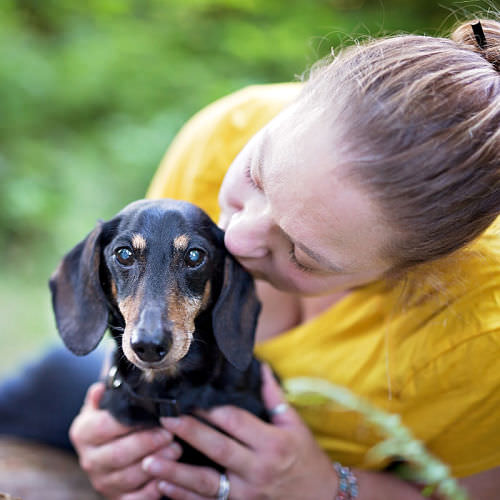
About the Author: Through her 17 years of owning and caring for Dachshunds, and almost 10 years researching and writing about them, JW has become a respected expert in the Dachshund community. Read more about her here.



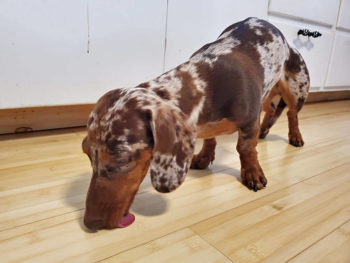
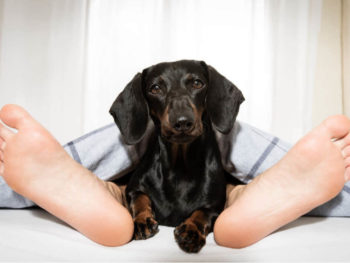
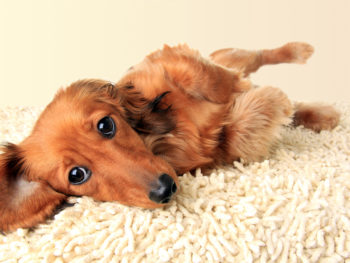
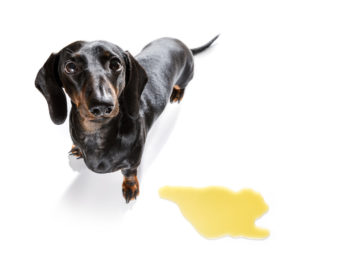
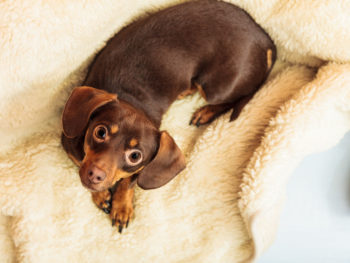


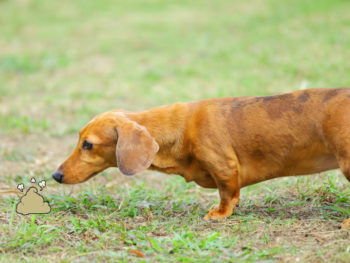
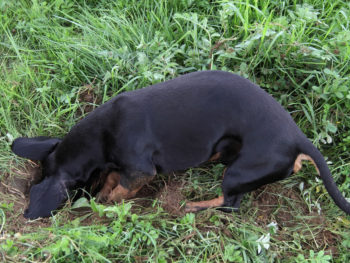

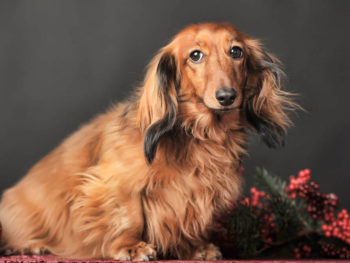
 Is Your Senior Dachshund Showing Signs of Canine Dementia?
Is Your Senior Dachshund Showing Signs of Canine Dementia?


